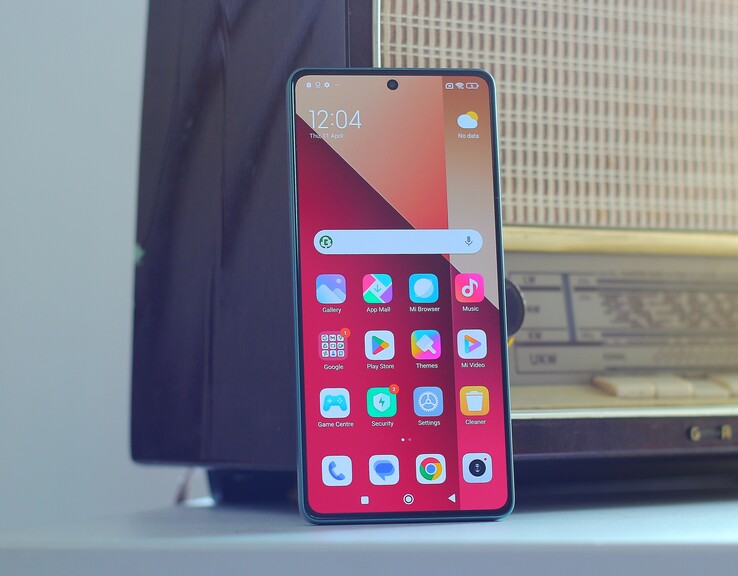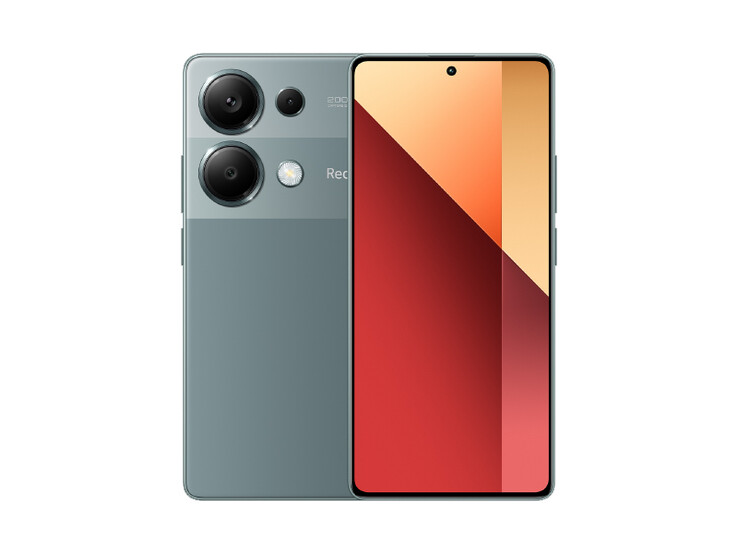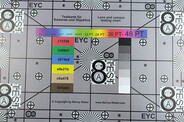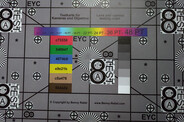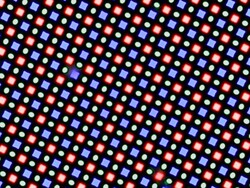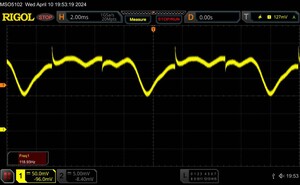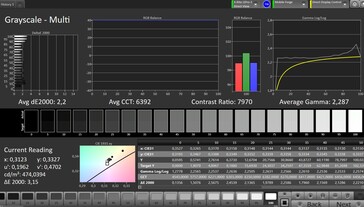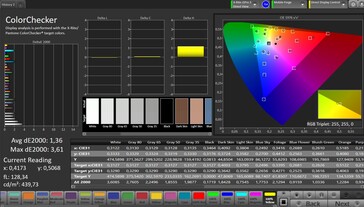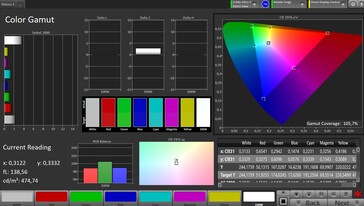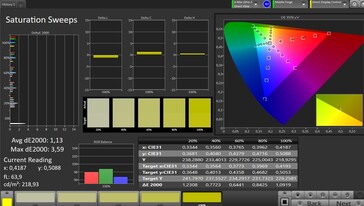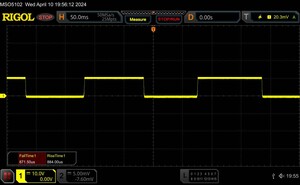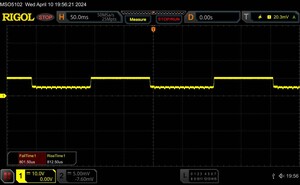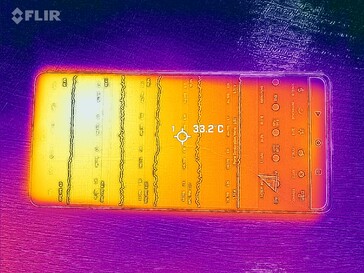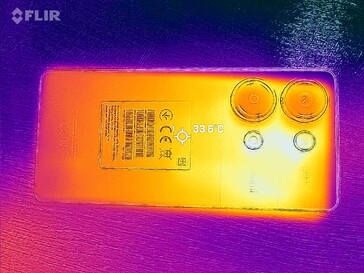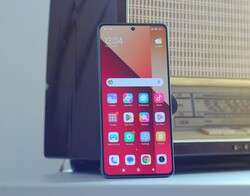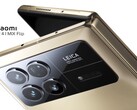Xiaomi Redmi Note 13 Pro 4G smartphone review - Midranger with AMOLED and good cameras
Possible competitors in comparison
Rating | Date | Model | Weight | Drive | Size | Resolution | Price |
|---|---|---|---|---|---|---|---|
| 82.5 % v7 (old) | 05 / 2024 | Xiaomi Redmi Note 13 Pro 4G Helio G99, Mali-G57 MP2 | 188 g | 512 GB UFS 2.2 Flash | 6.67" | 2400x1080 | |
| 85.8 % v7 (old) | 01 / 2024 | Xiaomi Redmi Note 13 Pro 5G SD 7s Gen 2, Adreno 710 | 187 g | 256 GB UFS 2.2 Flash | 6.67" | 2712x1220 | |
| 83.9 % v7 (old) | 02 / 2024 | Honor Magic6 Lite SD 6 Gen 1, Adreno 710 | 185 g | 256 GB UFS 3.1 Flash | 6.78" | 2652x1200 | |
| 81.9 % v7 (old) | 12 / 2022 | Motorola Moto G72 Helio G99, Mali-G57 MP2 | 166 g | 128 GB UFS 2.2 Flash | 6.60" | 2400x1080 |
Case and features - High-quality plastic housing
Not all smartphone buyers need 5G, so there is room for a high-quality mid-range phone with 4G offered at a slightly lower price. This is where the Redmi Note 13 Pro 4G from Xiaomi makes its grand entrance, as it brings many advantages of the Redmi Note 13 Pro 5G but is 50 euros cheaper.
Although the back is similar, Xiaomi has made some design changes to make the 4G model recognizable at first glance. There is no grouped camera module that stands out in terms of color and feel, but rather individual lenses in the housing. Two slightly lighter stripes run across the upper part of the back. The available colors are green, purple, and black.
The front of the 4G model also has very slim display edges and the punch hole for the front camera is also very small. The device can hardly be twisted even with force and appears very stable overall. Material transitions cannot be felt and all corners are nicely rounded so that the phone sits comfortably in the hand.
Protection against dust and splash water according to IP54 is provided, but the device should not be immersed in water.
Xiaomi offers two storage variants of the Redmi Note 13 Pro 4G:
- 8 GB RAM / 256 GB storage: 349 euros
- 12 GB RAM / 512 GB storage: 399 euros
NFC is on board, as is an infrared blaster, with the help of which the phone can be used as a remote control for other devices. There is also a 3.5 mm audio port.
Unlike the Redmi Note 13 Pro 5G, there is no support for eSIMs, but there is a microSD reader. This occupies one of the two SIM slots and achieved mediocre speeds for the price range in our tests with the Angelbird V60 reference memory card.
| SD Card Reader - average JPG Copy Test (av. of 3 runs) | |
| Xiaomi Redmi Note 13 Pro 4G (Angelbird V60) | |
| Motorola Moto G72 (Angelbird V60) | |
Cross Platform Disk Test (CPDT)
Communication, software and operation - Updates until 2028
Thanks to many 4G frequencies, the smartphone can also be used for mobile Internet in many countries when traveling. We liked the reception quality during our test period.
WiFi 5 is the fastest Wi-Fi standard Redmi Note 13 Pro 4G supports. This enables speeds of around 300 - 350 MBit/s. The device is slower on Wi-Fi than the 5G version and is almost exactly half as fast. However, this will only be noticeable in everyday use for large downloads.
Xiaomi installs Android 13 ex-works and overlays the older MIUI interface, but an update to Android 14 and Xiaomi's new HyperOS is now also available. The security patches are from March 2024 at the time of testing and are therefore still reasonably up-to-date. Xiaomi wants to deliver 2 more operating system versions and security patches by 2028.
There are quite a few apps pre-installed on the phone, including many advertising apps and games. So if you want a clean system, you have to delete some of them.
The 120 Hz screen allows for extremely fast and responsive inputs, even at the corners and edges. The fingerprint sensor is integrated into the display - it unlocks the phone very quickly and reliably. Face recognition also works perfectly, even in dim light.
| Networking | |
| Xiaomi Redmi Note 13 Pro 4G | |
| iperf3 receive AXE11000 | |
| iperf3 transmit AXE11000 | |
| Xiaomi Redmi Note 13 Pro 5G | |
| iperf3 receive AXE11000 | |
| iperf3 transmit AXE11000 | |
| Honor Magic6 Lite | |
| iperf3 receive AXE11000 | |
| iperf3 transmit AXE11000 | |
| Motorola Moto G72 | |
| iperf3 receive AXE11000 | |
| iperf3 transmit AXE11000 | |
| Average of class Smartphone | |
| iperf3 receive AXE11000 | |
| iperf3 transmit AXE11000 | |
Cameras - High-quality mid-range cameras
The high-quality camera system of the Redmi Note 13 Pro 5G has also been adopted for the 4G model. Photos from the back of the phone are usually taken with the 200-megapixel main camera, which usually combines every 16 pixels for a higher light yield and thus takes 12-megapixel pictures. The full resolution can be used in a special mode. The images are protected from blurring by an optical stabilizer.
The photos from the main camera are pleasing with a lot of detail and very good brightness in darker situations. We also found the sharpness to be good, although there were some dropouts in certain areas.
Videos can only be recorded at 1080p and 60 fps on the 4G model; the 4K function of the 5G model has been removed.
The wide-angle camera offers 8 megapixels and takes decent pictures, but the sharpness drops significantly towards the edges. Xiaomi has also installed a 2-megapixel macro camera for extreme close-ups. This is suitable for snapshots, but you should not enlarge the images too much.
There is a selfie camera on the front with a resolution of 16 megapixels. The photos look reasonably well-lit and offer a decent level of detail for the price range.
Image comparison
Choose a scene and navigate within the first image. One click changes the position on touchscreens. One click on the zoomed-in image opens the original in a new window. The first image shows the scaled photograph of the test device.
Main cameraMain cameraLow LightUltra wide-angle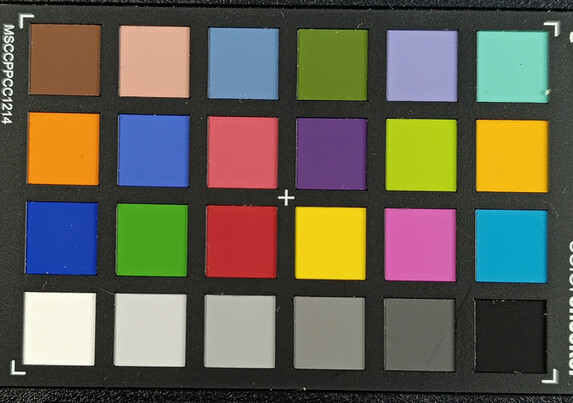
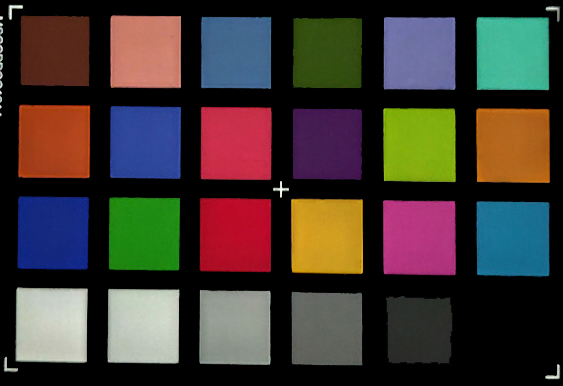
Display - Bright and true-color AMOLED
The screen is not quite as bright as in the 5G model. Although the Redmi Note 13 4G also has an AMOLED screen, there are other differences: the resolution is slightly lower and the PWM flickering has a lower frequency.
Specifically, we measured a maximum brightness of around 1,000 cd/m², which corresponds exactly to the manufacturer's specification. The brightness can increase even further on small surfaces, where we measured 1,198 cd/m². The brightness distribution is quite even and the color reproduction is at a very high level, so you also get a very high-quality display with the Redmi Note 13 4G.
| |||||||||||||||||||||||||
Brightness Distribution: 95 %
Center on Battery: 994 cd/m²
Contrast: ∞:1 (Black: 0 cd/m²)
ΔE ColorChecker Calman: 1.36 | ∀{0.5-29.43 Ø4.77}
ΔE Greyscale Calman: 2.2 | ∀{0.09-98 Ø5}
105.7% sRGB (Calman 2D)
Gamma: 2.287
CCT: 6392 K
| Xiaomi Redmi Note 13 Pro 4G AMOLED, 2400x1080, 6.7" | Xiaomi Redmi Note 13 Pro 5G AMOLED, 2712x1220, 6.7" | Honor Magic6 Lite AMOLED, 2652x1200, 6.8" | Motorola Moto G72 P-OLED, 2400x1080, 6.6" | |
|---|---|---|---|---|
| Screen | -0% | 23% | -67% | |
| Brightness middle (cd/m²) | 994 | 1205 21% | 1003 1% | 992 0% |
| Brightness (cd/m²) | 979 | 1177 20% | 1007 3% | 980 0% |
| Brightness Distribution (%) | 95 | 90 -5% | 96 1% | 92 -3% |
| Black Level * (cd/m²) | ||||
| Colorchecker dE 2000 * | 1.36 | 1.51 -11% | 0.8 41% | 4.56 -235% |
| Colorchecker dE 2000 max. * | 3.61 | 4.07 -13% | 2.4 34% | 7.96 -120% |
| Greyscale dE 2000 * | 2.2 | 2.5 -14% | 0.9 59% | 3.1 -41% |
| Gamma | 2.287 96% | 2.175 101% | 2.18 101% | 2.233 99% |
| CCT | 6392 102% | 6407 101% | 6406 101% | 7098 92% |
* ... smaller is better
Screen Flickering / PWM (Pulse-Width Modulation)
| Screen flickering / PWM detected | 119 Hz | ||
The display backlight flickers at 119 Hz (worst case, e.g., utilizing PWM) . The frequency of 119 Hz is very low, so the flickering may cause eyestrain and headaches after extended use. In comparison: 53 % of all tested devices do not use PWM to dim the display. If PWM was detected, an average of 8084 (minimum: 5 - maximum: 343500) Hz was measured. | |||
Measurement series with fixed zoom level and different brightness settings
Display Response Times
| ↔ Response Time Black to White | ||
|---|---|---|
| 1.8 ms ... rise ↗ and fall ↘ combined | ↗ 0.9 ms rise | |
| ↘ 0.9 ms fall | ||
| The screen shows very fast response rates in our tests and should be very well suited for fast-paced gaming. In comparison, all tested devices range from 0.1 (minimum) to 240 (maximum) ms. » 9 % of all devices are better. This means that the measured response time is better than the average of all tested devices (20.2 ms). | ||
| ↔ Response Time 50% Grey to 80% Grey | ||
| 1.6 ms ... rise ↗ and fall ↘ combined | ↗ 0.8 ms rise | |
| ↘ 0.8 ms fall | ||
| The screen shows very fast response rates in our tests and should be very well suited for fast-paced gaming. In comparison, all tested devices range from 0.165 (minimum) to 636 (maximum) ms. » 7 % of all devices are better. This means that the measured response time is better than the average of all tested devices (31.6 ms). | ||
Performance, emissions and battery life - Quite low power
With the MediaTek Helio G99 Xiaomi has opted for a rather slow SoC, and compared to the Redmi Note 13 Pro 5G you have to accept significant performance losses. Other manufacturers now also offer faster phones in this price range.
In everyday use, the Redmi Note 13 Pro 4G is not a slow cell phone; smooth navigation through the menus is possible without any problems in most cases. The difference in performance is only really noticeable when running multitasking or more complex apps. Xiaomi has opted for UFS 2.2 flash memory, which is fast and enables short loading times.
The phone's casing can heat up to 40.8 °C after prolonged use; we measured it at room temperature. This is noticeable, but not critical, and the 3DMark stress tests show that the SoC can maintain its performance even under prolonged load.
The speaker on the bottom edge is supported by the earpiece, so stereo sound is possible. The sound is full and quite warm, making it a pleasure to listen to music. Of course, you have to do without bass and low mids for the most part, but we like the sound for a mid-range class.
If you want even better sound, you can connect headphones or speakers via the 3.5 mm jack connection or Bluetooth. Almost all currently available wireless codecs are supported for the latter.
At 5,000 mAh, the battery is slightly smaller than in the 5G model, but still managed a good runtime of over 16 hours in our Wi-Fi test. This means you can get through a day of heavy use without charging. If the phone does need to be plugged in, it can be charged with up to 67 watts via the supplied power adapter and is thus fully charged again in just under an hour.
| Xiaomi Redmi Note 13 Pro 4G | Xiaomi Redmi Note 13 Pro 5G | Honor Magic6 Lite | Motorola Moto G72 | Average 512 GB UFS 2.2 Flash | Average of class Smartphone | |
|---|---|---|---|---|---|---|
| AndroBench 3-5 | -0% | 29% | -12% | 10% | 87% | |
| Sequential Read 256KB (MB/s) | 933.8 | 946.8 1% | 1827.3 96% | 868.5 -7% | 1026 ? 10% | 2235 ? 139% |
| Sequential Write 256KB (MB/s) | 795.4 | 808.2 2% | 843.34 6% | 497.5 -37% | 930 ? 17% | 1871 ? 135% |
| Random Read 4KB (MB/s) | 246.8 | 239.2 -3% | 223.75 -9% | 231.4 -6% | 234 ? -5% | 297 ? 20% |
| Random Write 4KB (MB/s) | 222.2 | 220.5 -1% | 271.22 22% | 230.2 4% | 261 ? 17% | 343 ? 54% |
| Xiaomi Redmi Note 13 Pro 4G | Xiaomi Redmi Note 13 Pro 5G | Honor Magic6 Lite | Average 512 GB UFS 2.2 Flash | Average of class Smartphone | |
|---|---|---|---|---|---|
| PCMark for Android | -19% | 9% | -7% | 70% | |
| Storage 2.0 seq. read int. (MB/s) | 819 ? | 758 ? -7% | 779 ? -5% | 1704 ? 108% | |
| Storage 2.0 seq. write int. (MB/s) | 726 ? | 776 ? 7% | 714 ? -2% | 1576 ? 117% | |
| Storage 2.0 random read int. (MB/s) | 45.4 ? | 25.7 ? -43% | 40.2 ? -11% | 42.9 ? -6% | |
| Storage 2.0 random write int. (MB/s) | 67.7 ? | 41.2 ? -39% | 54.5 ? -19% | 69.7 ? 3% | |
| Storage 2.0 (Points) | 26431 ? | 23116 ? -13% | 28736 9% | 27270 ? 3% | 59738 ? 126% |
(±) The maximum temperature on the upper side is 40.8 °C / 105 F, compared to the average of 35.2 °C / 95 F, ranging from 21.9 to 247 °C for the class Smartphone.
(+) The bottom heats up to a maximum of 38.8 °C / 102 F, compared to the average of 34 °C / 93 F
(+) In idle usage, the average temperature for the upper side is 25 °C / 77 F, compared to the device average of 32.9 °C / 91 F.
3DMark Wild Life Stress Test
| 3DMark | |
| Wild Life Stress Test Stability | |
| Honor Magic6 Lite | |
| Xiaomi Redmi Note 13 Pro 5G | |
| Xiaomi Redmi Note 13 Pro 4G | |
| Motorola Moto G72 | |
| Wild Life Extreme Stress Test | |
| Xiaomi Redmi Note 13 Pro 5G | |
| Motorola Moto G72 | |
| Honor Magic6 Lite | |
| Xiaomi Redmi Note 13 Pro 4G | |
Xiaomi Redmi Note 13 Pro 4G audio analysis
(±) | speaker loudness is average but good (81.6 dB)
Bass 100 - 315 Hz
(-) | nearly no bass - on average 25.4% lower than median
(±) | linearity of bass is average (10.7% delta to prev. frequency)
Mids 400 - 2000 Hz
(±) | higher mids - on average 6.6% higher than median
(±) | linearity of mids is average (7.3% delta to prev. frequency)
Highs 2 - 16 kHz
(±) | higher highs - on average 5.3% higher than median
(+) | highs are linear (6.8% delta to prev. frequency)
Overall 100 - 16.000 Hz
(±) | linearity of overall sound is average (23.8% difference to median)
Compared to same class
» 54% of all tested devices in this class were better, 8% similar, 38% worse
» The best had a delta of 11%, average was 35%, worst was 134%
Compared to all devices tested
» 71% of all tested devices were better, 6% similar, 23% worse
» The best had a delta of 4%, average was 24%, worst was 134%
Motorola Moto G72 audio analysis
(+) | speakers can play relatively loud (85.4 dB)
Bass 100 - 315 Hz
(-) | nearly no bass - on average 28.3% lower than median
(±) | linearity of bass is average (12.5% delta to prev. frequency)
Mids 400 - 2000 Hz
(±) | higher mids - on average 5.6% higher than median
(+) | mids are linear (4.7% delta to prev. frequency)
Highs 2 - 16 kHz
(+) | balanced highs - only 4.2% away from median
(+) | highs are linear (6% delta to prev. frequency)
Overall 100 - 16.000 Hz
(±) | linearity of overall sound is average (21.2% difference to median)
Compared to same class
» 40% of all tested devices in this class were better, 8% similar, 52% worse
» The best had a delta of 11%, average was 35%, worst was 134%
Compared to all devices tested
» 58% of all tested devices were better, 7% similar, 35% worse
» The best had a delta of 4%, average was 24%, worst was 134%
| Xiaomi Redmi Note 13 Pro 4G 5000 mAh | Xiaomi Redmi Note 13 Pro 5G 5100 mAh | Honor Magic6 Lite 5300 mAh | Motorola Moto G72 5000 mAh | |
|---|---|---|---|---|
| Battery runtime | ||||
| WiFi v1.3 (h) | 16.2 | 16.7 3% | 15.1 -7% | 15.5 -4% |
Pros
Cons
Verdict - Significant differences in equipment compared to the 5G model
The Xiaomi Redmi Note 13 Pro 4G is a great mid-range phone, but it is somewhat overshadowed by its 5G brother. Although it has the same high-quality camera system, it has to do without maximum brightness. You also have to accept a lower screen resolution, the absence of 4K video recording, slower Wi-Fi, and no eSIM support. Apart from the fact that, as the name suggests, you can't use the 5G network and there are significant performance losses.
For a price difference of 50 euros, which can be put into perspective again depending on the retailer, that's quite a lot of cost-cutting measures that Xiaomi has taken. The Redmi Note 13 Pro 5G is definitely a strong competitor and you should consider paying a small premium for the many advantages.
On its own, however, our test device impresses with a stylish and very modern casing, fast charging, good runtimes, a bright and color-true screen, and good features. It is, therefore, also definitely a good buy. There are hardly any real weak points: The software, which is loaded with a lot of bloatware, is not a highlight and the PWM flickering of the screen could cause problems for sensitive people.
The Xiaomi Redmi Note 13 Pro 4G is a strong mid-range phone that has an even better-equipped competitor in the form of the 5G model.
If you want a different brand, you can check out the Motorola Edge 40 Neo or the Honor Magic6 Lite as both offer 5G and are already quite affordable after price reductions.
Price and availability
At the time of publishing, the Xiaomi Redmi Note 13 Pro 4G with 512 GB mass storage is available directly from the manufacturer. Alternatively, interested users can order the Redmi Note 13 Pro 4G via Amazon for around $270.
Xiaomi Redmi Note 13 Pro 4G
- 05/03/2024 v7 (old)
Florian Schmitt
Transparency
The selection of devices to be reviewed is made by our editorial team. The test sample was provided to the author as a loan by the manufacturer or retailer for the purpose of this review. The lender had no influence on this review, nor did the manufacturer receive a copy of this review before publication. There was no obligation to publish this review. As an independent media company, Notebookcheck is not subjected to the authority of manufacturers, retailers or publishers.
This is how Notebookcheck is testing
Every year, Notebookcheck independently reviews hundreds of laptops and smartphones using standardized procedures to ensure that all results are comparable. We have continuously developed our test methods for around 20 years and set industry standards in the process. In our test labs, high-quality measuring equipment is utilized by experienced technicians and editors. These tests involve a multi-stage validation process. Our complex rating system is based on hundreds of well-founded measurements and benchmarks, which maintains objectivity. Further information on our test methods can be found here.




